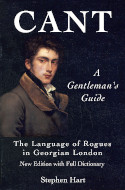London Free Schools and Charity Schools in 1731
The following information is taken from London in 1731 by Don Manoel Gonzales. The complete text of this work is available at Project Gutenburg.
Introduction
Don Manoel Gonzales (London in 1731) provides an account of free schools and charity schools in 18th century London.
St Paul's school is still in business - visit the St Paul's School website for more details.
Don Manoel's Account
I shall, in the next place, survey the free schools and charity schools.
Anciently I have read that there were three principal churches in London that had each of them a famous school belonging to it; and these three churches are supposed to be:
(1) The Cathedral Church of St. Paul, because, at a general council holden at Rome, anno 1176, it was decreed, “That every cathedral church should have its schoolmaster, to teach poor scholars and others as had been accustomed, and that no man should take any reward for licence to teach.”
(2) The Abbey Church of St Peter at Westminster; for of the school here Ingulphus, Abbot of Croyland, in the reign of William the Conqueror, writes as follows: “I, Ingulphus, a humble servant of God, born of English parents, in the most beautiful city of London, for attaining to learning was first put to Westminster, and after to study at Oxford,” &c.
(3) The Abbey Church of St. Saviour, at Bermondsey, in Southwark; for this is supposed to be the most ancient and most considerable monastery about the city at that time, next to that of St. Peter at Westminster, though there is no doubt but the convents of St. John by Clerkenwell, St. Bartholomew in Smithfield, St. Mary Overy in Southwark, that of the Holy Trinity by Aldgate, and other monasteries about the city, had their respective schools, though not in such reputation as the three first.
Of these none are now existing but St. Paul's and Westminster, though perhaps on different and later foundations. Yet other schools have been erected in this metropolis from time to time, amongst which I find that called Merchant Taylors' to be the most considerable.
St. Paul's School
St. Paul's School is situated on the east side of St. Paul's Churchyard, being a handsome fabric built with brick and stone, founded by John Collet, D.D. and Dean of St. Paul's, anno 1512, who appointed a high-master, sur-master, a chaplain or under-master, and 153 scholars, to be taught by them gratis, of any nation or country. He also left some exhibitions to such scholars as are sent to the universities and have continued at this school three years.
The masters are elected by the wardens and assistants of the Mercers' Company, and the scholars are admitted by the master upon a warrant directed to him by the surveyor. The elections for the university are in March, before Lady Day, and they are allowed their exhibitions for seven years.
To this school belongs a library, consisting chiefly of classic authors. The frontispiece is adorned with busts, entablature, pediments, festoons, shields, vases, and the Mercers' arms cut in stone, with this inscription over the door: INGREDERE UT PROFICIAS. Upon every window of the school was written, by the founder's direction: AUT DOCE, AUT DISCE, AUT DISCEDE--i.e., Either teach, learn, or begone.
The founder, in the ordinances to be observed in this school, says he founded it to the honour of the Child Jesus, and of His blessed mother Mary; and directs :
- that the master be of a healthful constitution, honest, virtuous, and learned in Greek and Latin;
- that he be a married or single man, or a priest that hath no cure;
- that his wages should be a mark a week, and a livery gown of four nobles, with a house in town, and another at Stebonheath (Stepney);
- that there should be no play-days granted but to the King, or some bishop in person:
- that the scholars every Childermas Day should go to St. Paul's Church, and hear the child-bishop sermon, and afterwards at high mass each of them offer a penny to the child-bishop:
[The founder] committed the care of the school to the Company of Mercers; the stipends to the masters, the officers' salaries, &c., belonging to the school, amounting at first to 118 pounds 14s. 7d. 1ob. per annum; but the rents and revenues of the school being of late years considerably advanced, the salaries of the masters have been more than doubled, and many exhibitions granted to those who go to the university, of 10 pounds and 6 pounds odd money per annum.
The second master hath a handsome house near the school, as well as the first master.
Other Schools
The school at Mercers' Chapel, in Cheapside, hath the same patrons and governors as that of St. Paul's, viz., the Mercers, who allow the master a salary of 40 pounds per annum, and a house, for teaching twenty-five scholars gratis.
Merchant Taylors' School is situated near Cannon Street, on St. Lawrence Poultney (or Pountney) Hill. This school, I am told, consists of six forms, in which are three hundred lads, one hundred of whom are taught gratis, another hundred pay two shillings and sixpence per quarter, and the third hundred five shillings a quarter; for instructing of whom there is a master and three ushers: and out of these scholars some are annually, on St. Barnabas' Day, the 11th of June, elected to St. John's College, in Oxford, where there are forty-six fellowships belonging to the school.
As to the charity schools: there are in all 131, some for boys, others for girls; where the children are taught, if boys, to read, write, and account; if girls, to read, sew, and knit; who are all clothed and fitted for service or trades gratis.

